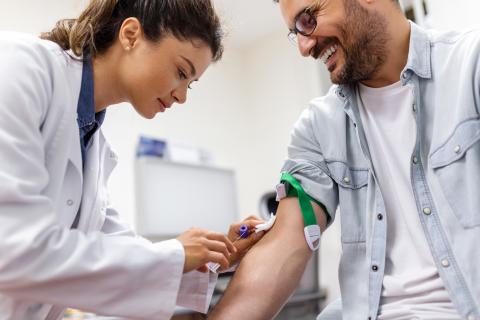Getting Your Blood Drawn: What to Expect

Preparation
Most blood tests don’t require any special preparation. Your provider should let you know whether you need to fast (not eat any food for 8-12 hours) prior to having your blood drawn. We encourage you to drink plenty of water to keep yourself hydrated before you get your blood drawn.
Blood is usually drawn from a vein in your arm or other body part using a needle. Sometimes, it may also be drawn using a finger prick.
If You're Nervous
Some people get nervous about having their blood drawn, are afraid of needles, or get nauseous at the site of blood. It is important to talk to the person drawing your blood to let them know so they can help you. It can help to look away or talk to someone to distract yourself. Sometimes, it may help to have a second person hold your arm so you don’t inadvertently jerk away during the collection process. This may be especially important with small children.
What Happens Next
The person drawing your blood will usually start by gently pressing their fingers against your skin to locate the best vein. A tourniquet may be tied above the site to help firm up the vein and make it easier to locate. You may also be asked to make a fist to help make the veins stand out more.
Your blood drawer will put on clean gloves before cleaning your skin with an alcohol pad. A small needle will be inserted into your vein. You may feel a “pinch” or quick prick. A small blood collection tube will be attached to the needle to collect the blood. Sometimes, several different kinds of tubes may be used. Each differently colored tube does something different to your blood that allows for different types of tests.
Once all the blood has been collected, the needle is removed from your vein and thrown away. The person drawing your blood will place a piece of gauze over the draw site. Gentle pressure is used for a few minutes to stop the bleeding. After the bleeding has stopped, a bandage will be placed over the draw site. Leave the bandage on for at least 20 minutes to prevent swelling and bruising.
Results
Usually, you don’t need to do anything else after a blood test. Results can take anywhere from a few minutes to a few weeks to come back. Your provider will get the results. It is important that you follow up with your provider to discuss your test results.
